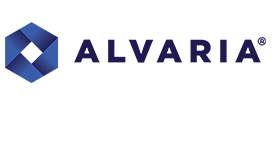Julie-Anne Hazlett, on behalf of Aspect Software, shares insight regarding how to get the most out of your workforce management (WFM) agents work from home during this global pandemic.
COVID-19 has created an urgent need for most organisations to rapidly implement work from home solutions for their staff. Regardless of where in the world you are, industry type, or size of the contact centre, most of you are having to consider the logistics of having staff working from home.
On top of the changing workplace environment, many centres are also unable to cope with the hugely increased demand. A lot of centres are desperately recruiting staff either externally or internally by redeploying staff from quieter areas of the organisation and upskilling them to handle some of the easier calls.
Below are several ideas for how we’ve seen contact centres in this region manage their workforce through a global pandemic.
Preparing for Rapidly Changing Contact Volumes
Due to the global situation, some contact centres are seeing much higher contact volumes for some lines of business than normal.
Higher contact volumes inevitably mean that the staff scheduled to work are overwhelmed with the workload and struggle to get through it within the usual service goals, which leads to longer hold times for customers trying to get through and often longer average handle times.
By using the Forecasting and Intraday Performance modules in Aspect WFM, our customers have been monitoring and tracking these changes so that they can create new scenarios that better reflect the distribution and volume of contacts for more accurate forecasts.
They have also been running many different what-if forecasts to get a better understanding of staffing requirements if the surge in contacts continues.
Outside of the workforce management piece, by reviewing the IVR configuration and messaging, some of the questions that callers are most interested in have been answered in the message without them needing to speak to anyone.
By understanding what your customers are calling about, the easier, more common answers to their questions can be added to the hold messaging and also the company website for more detail.
Keeping Your Agents Engaged
Many organisations have gone from no agents working from home to the majority of the workforce working from home in a couple of weeks. Remote work has its own set of challenges that have to be overcome to keep the workforce engaged and productive.
We’ve seen how important it is to make sure your agents are setting personal boundaries for their remote workspace, freeing themselves from the inevitable distractions that come from working from home. Here are some considerations we’ve seen that have been helpful to keep your remote workforce productive:
- Engage with your team daily using webcams to discuss daily and weekly objectives. This will help to keep your staff engaged and connected with their coworkers. Include team quizzes and/or lunch workouts from time to time to have some fun as a team.
- Don’t take things for granted and assume that everyone knows something. Check and make sure that the person understands. You cannot over-communicate at times like these.
- Recommend that staff set up an area at home that is their workspace. When they go there it is “going to work.” Encourage them to keep the workspace free from distractions, just like they would at work.
- Encourage your team to dress “productively”. Some might thrive in their casual remote attire, while others might benefit from wearing “work” clothes. Everyone is different and some people may need to dress smartly to feel like they are at work.
Experiment With Scheduling
Because of the current work environment, it might be time to be a little experimental with your scheduling practices. A lot of people working from home are now having to juggle work as well as maintaining their children’s school schedules.
Split shifts will give your staff the opportunity to effectively balance their home and work life, giving them more incentive to be productive while they are working.
Some people may be willing to work extra to make up for a loss of income in their family. Listen to what your staff need from you, and test out new ways of scheduling to provide more flexibility where and when you can.
Tools like Aspect Workforce Optimization and the mobile app make it so much easier to get information to staff about changes to schedules and for them check their shifts, swap shifts, bid on shifts and apply for annual leave.
At times like these, these tools have made it much easier for the workforce planning team to communicate with everyone and to ensure that everyone knows of any changes, as and when they happen.
This blog post has been re-published by kind permission of Alvaria – View the Original Article
For more information about Alvaria - visit the Alvaria Website
Call Centre Helper is not responsible for the content of these guest blog posts. The opinions expressed in this article are those of the author, and do not necessarily reflect those of Call Centre Helper.
Author: Alvaria
Published On: 30th Apr 2020 - Last modified: 5th May 2020
Read more about - Guest Blogs, Alvaria






 Alvaria was founded through the merger of Aspect Software and Noble Systems, technology leaders in Customer Experience (CX) and Workforce Engagement solutions
Alvaria was founded through the merger of Aspect Software and Noble Systems, technology leaders in Customer Experience (CX) and Workforce Engagement solutions 








